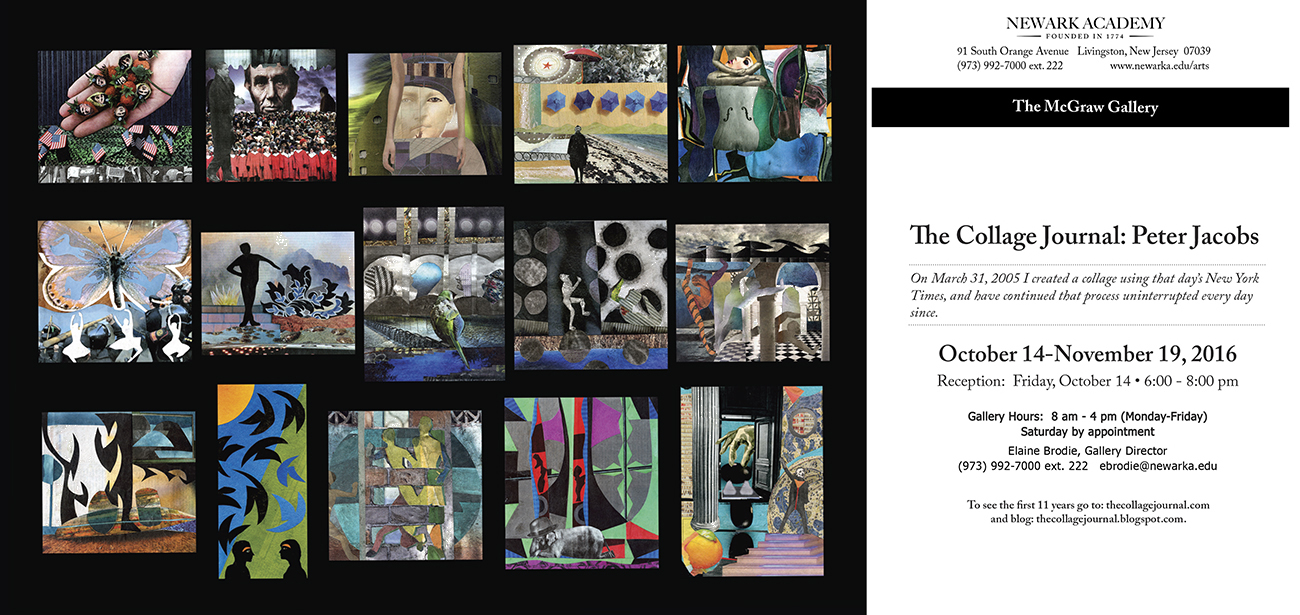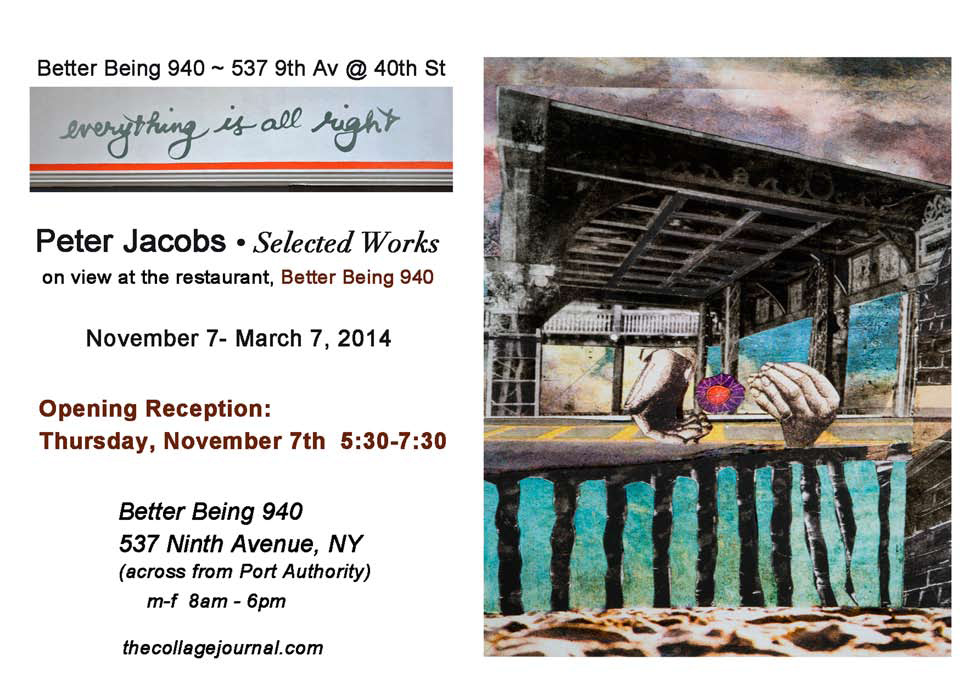XXXXXXXXXXXXXXXXXXXXXXXXXXXXXXXXXXXXXXXXXXXXXXXXXXin its 20th year ______________________________________________________________________________________________
Joan Snyder / Artist This is an amazing body of work. Each piece speaks worlds. Just the idea that Peter did this every day for 10 years is remarkable. Mary Birmingham Like many of us, Peter Jacobs begins each day at the kitchen table with a cup of coffee and the New York Times. After digesting the news he creates a collage using images and text from that day’s newspaper, a practice the artist has continued without interruption since March 31, 2005. He observes, “The Collage Journal has become integrated in my daily life as a meditation, contemplation and re-evaluation of culture and identity.” Jacobs fashions these daily collages on the pages of spiral-bound sketchbooks. Intimate in scale and feeling, these compositions are like jazz improvisations that riff on both external events and the interior world of the artist. On the reverse of each collage he pastes words or phrases culled from that day’s paper, including the dateline. The words have no direct relationship to the imagery (beyond their common source) but instead reflect the artist’s free-form responses. In his ongoing dialogue with the newspaper, Jacobs contextualizes the daily news, transforming it into artwork that is both personal and universal. Jacobs mines all the components of the newspaper for his raw materials—news photos, art, advertisements, background colors and typography—combining whole images with fragments. Sometimes he cuts new figures or shapes directly from the paper, in a manner reminiscent of Matisse, who called his late collage work “drawing with scissors.” Often Jacobs achieves effects that appear surreal, with odd juxtapositions, ambiguous spaces, disembodied body parts and incongruent scales. While the individual collages do not directly represent real people and events, recognizable figures like popes, president and celebrities sometimes make appearances, and fragments of images can reflect real events. Many of the daily collages are purely abstract compositions. Despite the consistency in materials, technique, and format, the artist manages to make each day’s work fresh and unique. Jacobs archives The Collage Journal, storing the actual sketchbooks in special cases; he has also created an online digital archive that documents each day’s entry. For the past several years he has posted his daily collage on a blog linked to his website as well as on the social networking site, Facebook. This provides a way for viewers to react immediately to the work (and many of them respond with comments.) This interactivity between the artist and his followers on the Internet expands the scope of the Collage Journal so that it becomes part of the daily routines of others. There is a conceptual symmetry in the process: Jacobs takes visual information from the daily newspaper, dissects and reconstructs it in a private daily ritual, and shares the resulting collages on the Internet, placing the altered material back into the public realm. His use of the newspaper as a source material underscores Jacobs’s affinity with the Dada artists who nearly one hundred years ago embraced collage as an effective means to dissolve the boundaries between art and everyday life; his use of technology to communicate these ideas places Jacobs firmly in the twenty-first century. Marina Delaney Peter Jacobs, who has been involved with the art of collage for over two decades has developed a complex visual language that seeks to reconcile the rational with the irrational. Jacobs' collages are usually comprised of spliced images applied to an architectonic framework. The stability of the architectural foundation allows him to juxtapose incongruous elements that, in spite of themselves, produce a singular cohesive vision. Instinctively the artist seems to assert the primacy of visual relationships over knowledge: in his world it is color, line and space, not reason, that are determinants of logic. The art of collage, as a reconfiguration of discarded images, is a medium destined to render order out of chaos. Jacobs has understood this inherent dilemna and resolves it in a manner that is decidedly postmodern. Passages of humor and wit, beauty and nature, psychology and rhetoric, coexist as a fragmented though unified whole. Indeed, Jacobs continues to reconsider the formal aspects of collage while adhering to the basic principles of its Cubist origins,as an ironic form of expression. Dan Bischoff Montclair artist Peter Jacobs has been keeping track of our times by turning them into a collage — he cuts out images from a newspaper with an X-Acto blade and glues them into Strathmore sketchbooks, creating remarkably integrated original images composed by sight (there are no computer algorithms choosing and shaping his work). Vivien Raynor Peter Jacobs cuts strips from high-grade reproductions of fauna (mostly fish) and flora. He then weaves them together, producing collages that are as rich and dense as any medieval stained glass window, particularly the roundel with an orange cap at the center - this imprinted with the legend, New Castle Brown Ale. Richard DiGangi You have never failed to amaze me with how the material is rearranged, if that is a proper word to use in the collage making process, to express a vision. They always evoke in me some sort of a response. I don't know if it is something that you have intended, or if it is just the external wrapping of a vision personal to only you. Your cleverness of mind gives me a glimmer of hope for the human condition. • Article in New Jersey Stage, January 2,2022 __________________________________________________________________________
• Featured Artist on State of The Arts: PBS Television: watch the Video __________________________________________________________________________ CLICK To See Artist Talk with Eric Levin , Hunterdon Art Museum 5/17/2015 __________________________________________________________________________ The Artful Blogger Review: ILENE DUBE __________________________________________________________________________ •Kolaj Magazine, Montreal, June 2015 __________________________________________________________________________
__________________________________________________________________________ Visual Arts Center of New Jersey 2012 __________________________________________________________________________ Featured Artist in the Winter 2011 Strathmore Artist Newsletter
__________________________________________________________________________ __________________________________________________________________________ Work on View at The Montclair Art Museum: Opening Thursday, September 23, 2010
__________________________________________________________________________ * Read the New Jersey Monthly article (April 2010) about artist * Read The Montclair Times article (April 2010) about artist
__________________________________________________________________________
Recent Exhibitions
__________________________________________________________________________
* Read the New Jersey Monthly article (April 2010) about artist * Read The Montclair Times article (April 2010) about artist
|

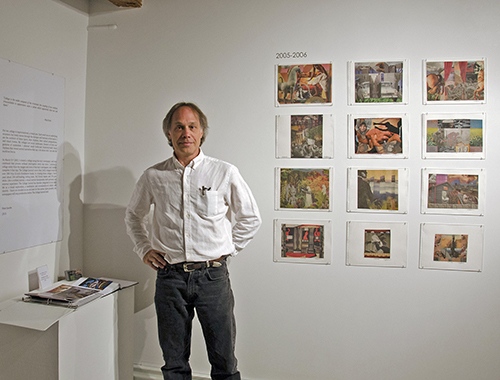
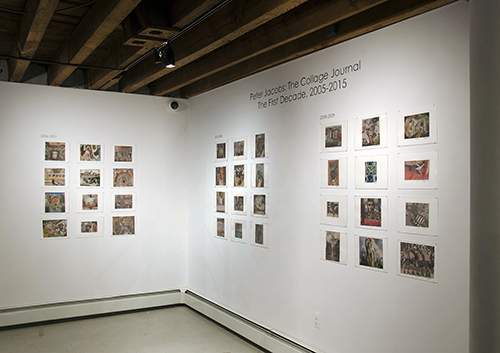
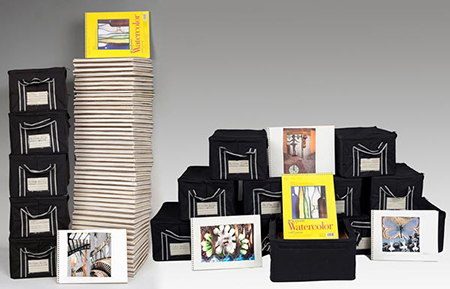

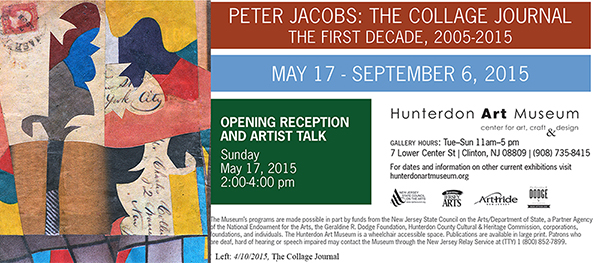
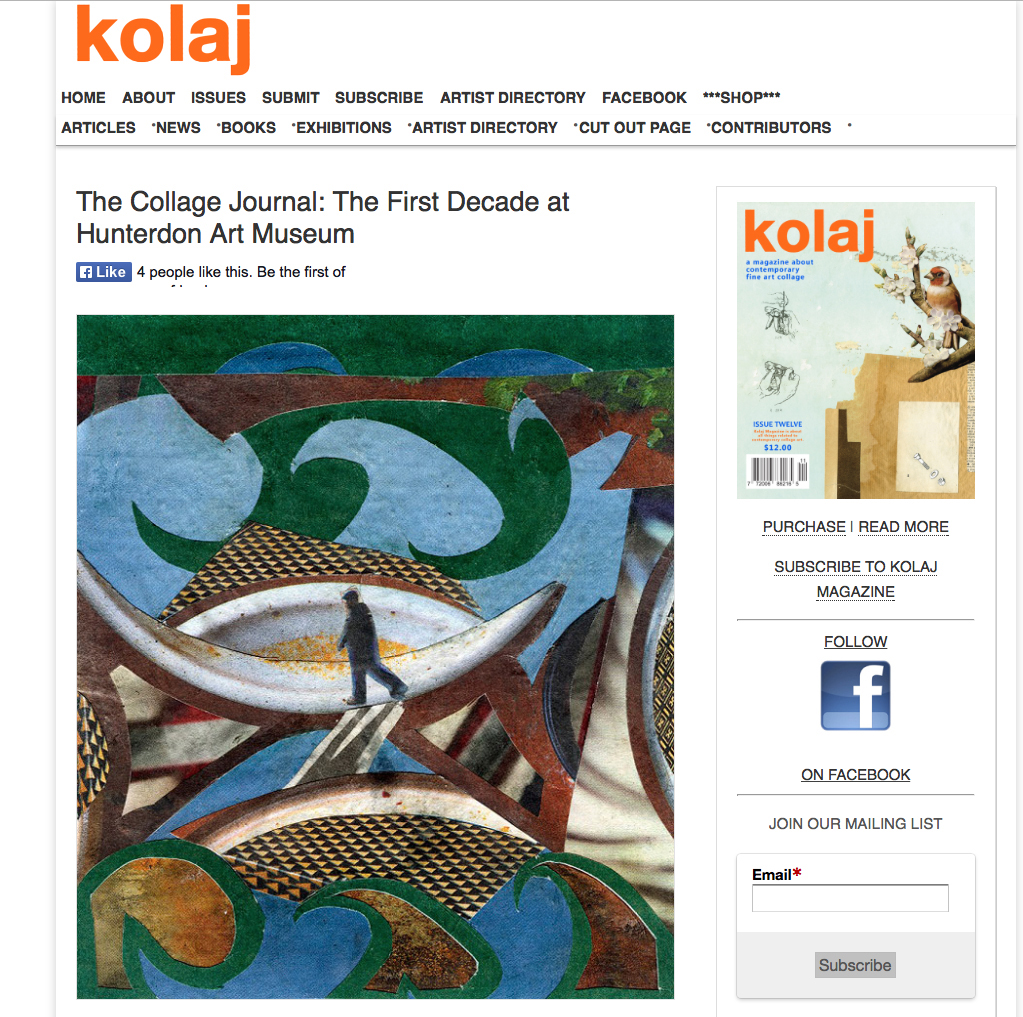
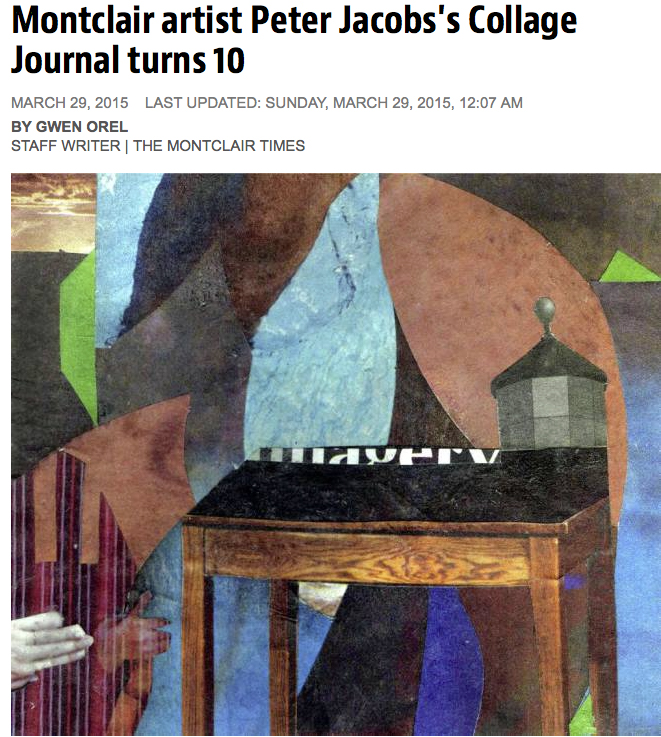
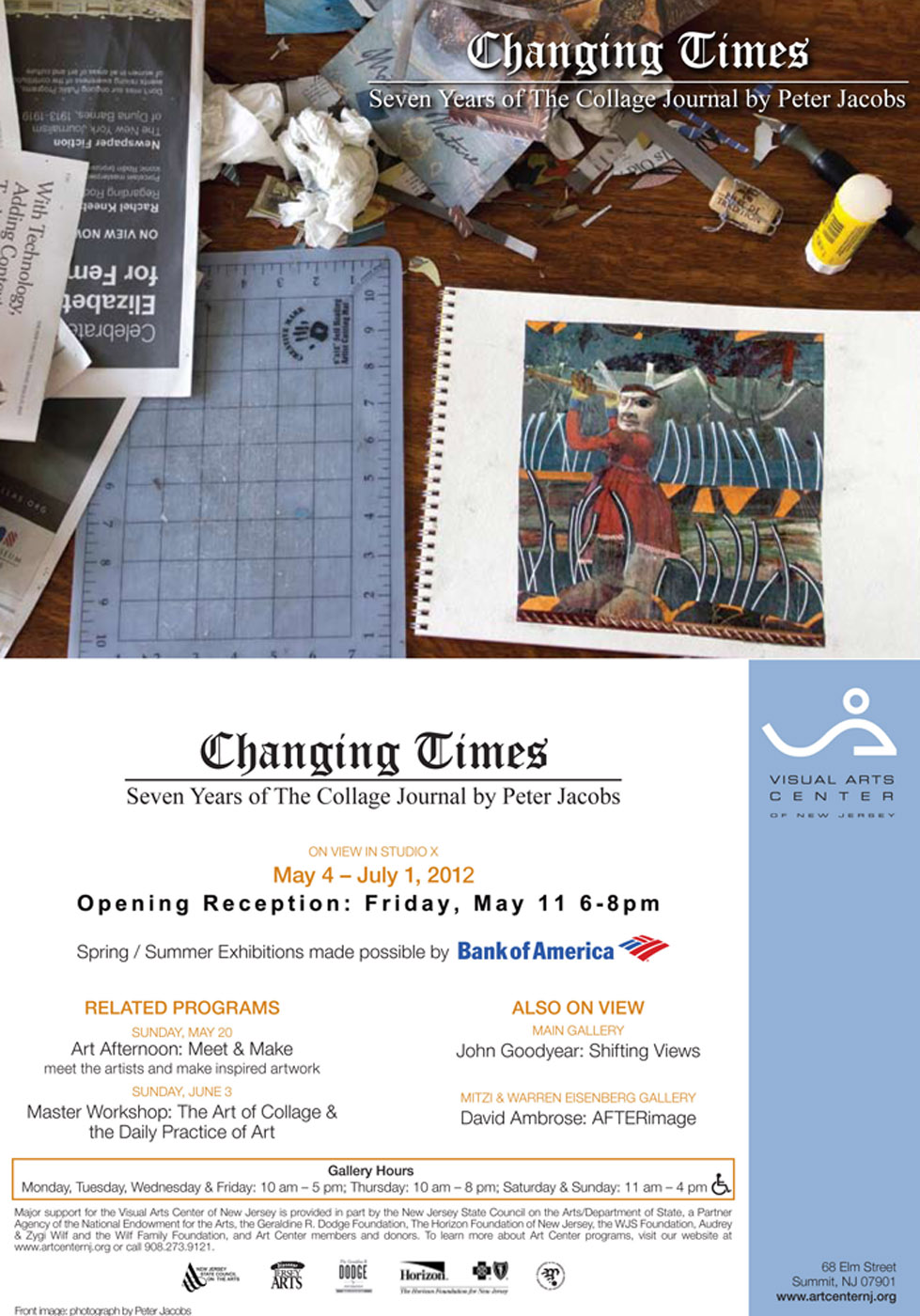
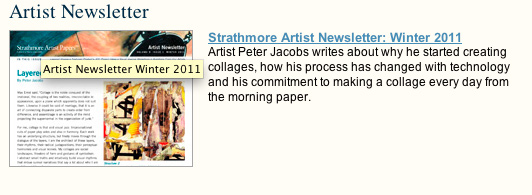
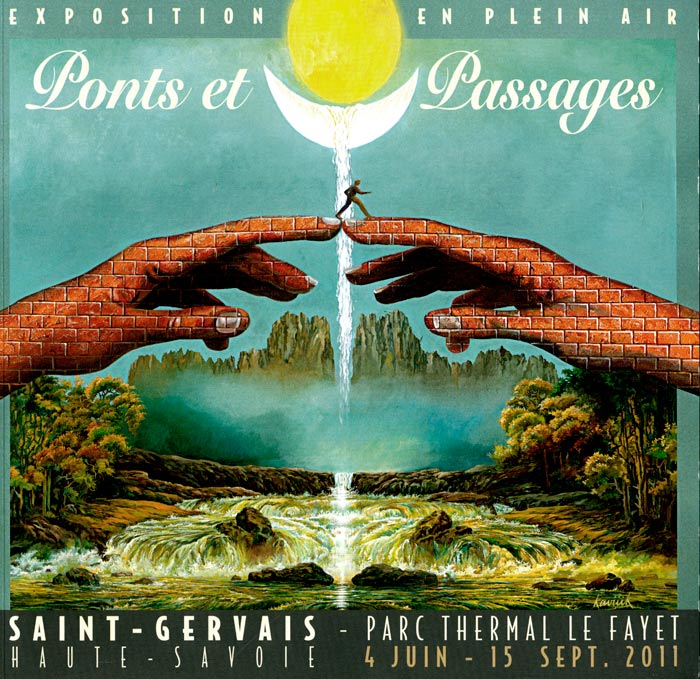
 •
•